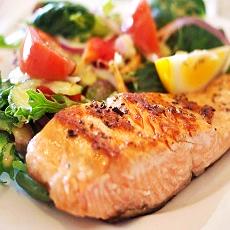10 Substitutes for All-Purpose Flour
Best Flour substitutes
Fact Checked
×All the content published in our website is fact checked to validate its accuracy.
Visit our guidelines web page to learn more about our strict processes regarding how we review our content's sources: reliable and reputable journals, media websites, universities, colleges, organizations, and professionals.
Our articles are based on scientific evidence, and the references are included in their footnotes, which are clickable links to sound scientific papers.
First published: 07. Jan.2025
Overview
Replacing refined all-purpose flour with another grain flour will add variety to your diet and make it healthier.
Non-wheat flours often contain more protein, fiber, and nutrients than regular wheat flour. Most of them are whole grain flour, with health promoting effects.
This article will show you how to cook using ten different healthy grain and seed flours.
References and Further Reading
(1) Peter R. Shewry, Sandra Hey, (2020). Do "ancient" wheat species differ from modern bread wheat in their contents of bioactive components?. Journal of Cereal Science, Vol 65, pp 236-243, ISSN 0733-5210, https://doi.org/10.1016/j.jcs.2015.07.014.
(2) U.S. Department of Agriculture and U.S. Department of Health and Human Services, (2020). Dietary Guidelines for Americans, 2020-2025. 9th Edition. December 2020. Available at DietaryGuidelines.gov
(3) Du, Mengxi et al., (2022). Whole-grain food intake among US adults, based on different definitions of whole-grain foods, NHANES 2003–2018. The American Journal of Clinical Nutrition, Volume 116, Issue 6, 1704 - 1714
(4) Cecilie Kyrø, ,Anne Tjønneland, (2016). Whole grains and public health. BMJ 2016; 353 doi: https://doi.org/10.1136/bmj.i3046 (Published 14 June 2016)
(5) Frølich W, Aman P, Tetens I., (2013). Whole grain foods and health - a Scandinavian perspective. Food Nutr Res. 2013;57. doi: 10.3402/fnr.v57i0.18503. Epub 2013 Feb 12. PMID: 23411562
(6) Ahluwalia N, Herrick KA, Terry AL, Hughes JP., (2019). Contribution of whole grains to total grains intake among adults aged 20 and over: United States, 2013–2016. NCHS Data Brief, no 341. Hyattsville, MD: National Center for Health Statistics
(7) Slavin J., (2004). Whole grains and human health. Nutr Res Rev. 2004 Jun;17(1):99-110. doi: 10.1079/NRR200374. PMID: 19079919
(8) Aune D, Keum N, Giovannucci E, Fadnes L T, Boffetta P, Greenwood D C et al., (2016). Whole grain consumption and risk of cardiovascular disease, cancer, and all cause and cause specific mortality: systematic review and dose-response meta-analysis of prospective studies. BMJ 2016; 353 :i2716 doi:10.1136/bmj.i2716
(9) Xu X, Luo Z, Yang Q, Xiao Z, Lu X., (2019). Effect of quinoa flour on baking performance, antioxidant properties and digestibility of wheat bread. Food Chem. 2019 Oct 1;294:87-95. doi: 10.1016/j.foodchem.2019.05.037. Epub 2019 May 8. PMID: 31126509
(10) Hopkin L, Broadbent H, Ahlborn GJ., (2021). Influence of almond and coconut flours on Ketogenic, Gluten-Free cupcakes. Food Chem X. 2021 Dec 6;13:100182. doi: 10.1016/j.fochx.2021.100182. PMID: 34917930
(11) Shewry PR., (2009). Wheat. J Exp Bot. 2009;60(6):1537-53. doi: 10.1093/jxb/erp058. PMID: 19386614
(12) Burbano, J.J. and Correa, M.J., (2024). Almond flour a by-product of oil extraction: nutritional characterisation and impact on rheological properties of premixes for bakery products. Int J Food Sci Technol, 59: 3126-3133. https://doi.org/10.1111/ijfs.17055
(13) G Gotama, N F Sadek and F Tedjakusuma, (2024). Almond flour and its potential in diabetes management: A short review. 2024 IOP Conf. Ser.: Earth Environ. Sci. 1352 012091 DOI 10.1088/1755-1315/1352/1/012091
(14) Delgado-Andrade C, Olías R, Marín-Manzano MC, Seiquer I, Clemente A. , (2024). Chickpea Seed Flours Improve the Nutritional and the Antioxidant Profiles of Traditional Shortbread Biscuits: Effects of In Vitro Gastrointestinal Digestion. Antioxidants (Basel). 2024 Jan 17;13(1):118. doi: 10.3390/antiox13010118. PMID: 38247542
(15) Zeng X, Wang M, Chen L, Zheng B., (2023). Impact of using whole chestnut flour as a substitute for cake flour on digestion, functional and storage properties of chiffon cake: A potential application study. Food Chem. 2024 Jan 30;432:137016. doi: 10.1016/j.foodchem.2023.137016. Epub 2023 Jul 27. PMID: 37647706
(16) Zamaratskaia, G., Gerhardt, K., Knicky, M., & Wendin, K., (2023). Buckwheat: an underutilized crop with attractive sensory qualities and health benefits. Critical Reviews in Food Science and Nutrition, 64(33), 12303–12318. https://doi.org/10.1080/10408398.2023.2249112
(17) Adepoju M, Verheecke-Vaessen C, Pillai LR, Phillips H, Cervini C., (2024). Unlocking the Potential of Teff for Sustainable, Gluten-Free Diets and Unravelling Its Production Challenges to Address Global Food and Nutrition Security: A Review. Foods. 2024; 13(21):3394. https://doi.org/10.3390/foods13213394
(18) Elke K. Arendt, Emanuele Zannini, (2013). 13 - Amaranth. Editor(s): Elke K. Arendt, Emanuele Zannini, In Woodhead Publishing Series in Food Science, Technology and Nutrition, Cereal Grains for the Food and Beverage Industries, Woodhead Publishing, pp 439-473, ISBN 9780857094131,https://doi.org/10.1533/9780857098924.439
About this Article
10 Substitutes for All-Purpose Flour, A. Whittall
©2025 Fit-and-Well.com. First Published: 07.01.2025. Update scheduled for 07.01.2028. https://www.fit-and-well.com/fitness/10-substitutes-for-all-purpose-flour.html
Tags: wheat, flour, almond, rice, chickpea, chestnut, coconut, quinoa, oat, buckwheat, tef, amaranth, gluten-free,







